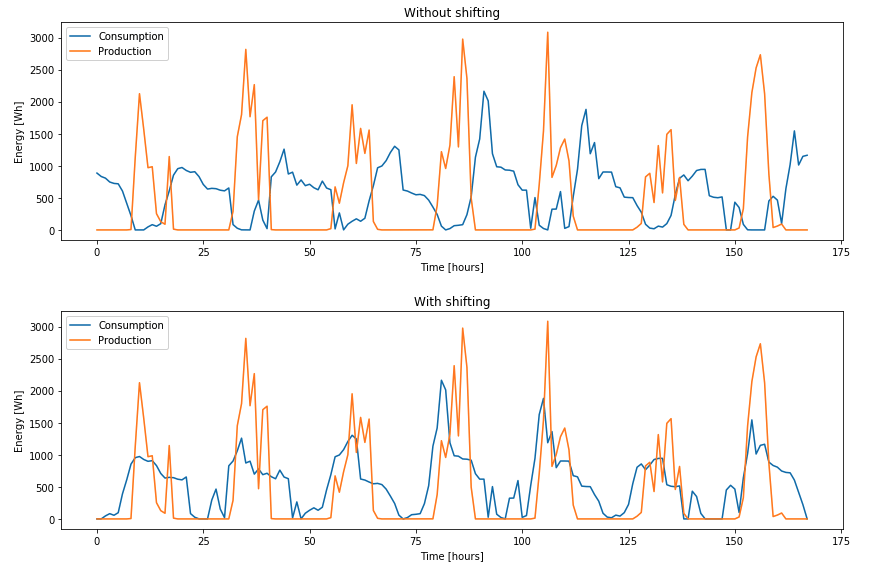Advancing From Community to Peer-To-Peer Energy Trading in the Medellín-Colombia Local Energy Market Trial
Written by Fatuma Ali, Juan Pablo Cárdenas Álvarez, Ana Trbovich, Andrea Bertolini, Juan Manuel España, and Santigo Ortega
In 2021, the Transactive Energy Colombia Initiative and Grid Singularity collaborated to introduce peer-to-peer (P2P) energy trading to the Medellin pilot project, which previously operated through community trading with differentiated net billing. Local aggregator NEU connected live consumption and generation data from the Medellin pilot to the Grid Singularity Exchange via an interoperable API and different scenarios were simulated. We found that even under the current net-metering pricing scheme in Colombia, P2P trading would reduce energy bills up to 7% and improve the self-sufficiency and self-consumption values by 18.2% and 51.6%, respectively. This shortens the payback period for investing in residential photovoltaics (PV) for several low-income prosumers. While applying demand side response mechanisms reduced the participants’ energy bills, the high investment costs of residential batteries rendered it financially unviable for low-income prosumers. These results should encourage Colombian regulators to allow P2P trading, improve the choice of energy tariffs and suppliers, and enhance access to affordable renewable energy assets for low income households, in order to accelerate the adoption of local energy markets and individual contribution to energy transition.
Latin America is one of the most promising regions moving towards energy transition, with Colombia poised to become one of the most dynamic markets, increasing wind and solar generation seven-fold in the last three years [1]. The catalyst was the 2014 legislation (Law 1715) that prescribed relevant incentives and tax benefits, followed by further reform of institutional and regulatory frameworks to enable integration of “new agents, technologies and transactional schemes” [2]. The next step in promoting smart and sustainable communities would be to facilitate peer-to-peer (P2P) electricity trading, whereby consumers and prosumers could trade electricity directly on digital platforms without the need for an intermediary [3], exchanging their surplus energy with other participants in the community and accessing locally produced and cleaner energy, often at a favourable rate. This article presents a P2P energy trading trial in Medellín, Colombia, carried out by the EIA University’s Transactive Energy Colombia Initiative (TECI) [4], Grid Singularity, open-source exchange developer [5], and a local digital energy retailer, NEU [6].
The energy trading pilot in Medellín tests user-centred energy models in a Colombian urban context and consists of a virtual microgrid with thirteen participants connected by smart meters through the NEU virtual app that tracks consumption, generation, and how surplus energy is allocated in the virtual market. As P2P energy trading is not yet legally permitted in Colombia, trading between project participants does not actually occur. Instead, participants buy energy at monthly tariffs determined by the Colombian energy regulator and sell their surplus energy back to the grid according to net-billing rules for small scale self-generators [7]. NEU monitors the households’ smart meters and settles the distribution of the surpluses on a digital layer. The pilot participants are not spatially connected, come from diverse socio-economic backgrounds and possess different energy assets (Figure 1).

Figure 1. Medellín pilot project participants (13) and their energy assets
A virtual twin of the Medellín energy community was created in the Grid Singularity Exchange (GSYe) to simulate and study the impact of a real peer-to-peer marketplace. NEU connected live, hourly consumption and generation data from the Medellin community to GSYe via an interoperable API according to the Colombian spot market timeframe. To speed up the analysis and iteration of the results, live data were supplemented with historical energy data from the municipality of Medellín from 2 to 9 May 2021, and a simplified version of the Colombian energy tariff was applied, excluding complex subsidy variables (selling price: 16.1ct USD/kWh and grid buying price: 14.7ct USD/kWh).
The following simulations were conducted:
- Case 1. Enabling P2P Trading - The first simulation enabled participants in the local energy market to exchange energy directly with each other (using a pay-as-bid double auction market mechanism), while aligned with the local net-metering regulation.
- Case 2. Matching PV generation and consumption patterns - The Medellín community displayed a mismatch between PV production and consumption, as PV generation peaks at times of low demand and is insufficient to cover the loads during times of high demand. In the second simulation, P2P trading was continued, but participants’ energy consumption patterns were adjusted to optimise the use of the local energy produced through a demand response (DR) mechanism that assumed a theoretical behavioural adjustment in consumption. All participant’s consumption profiles, including that of the community centre, were shifted manually by 10 hours to maximise the overlap of the consumption and production peaks, as shown in Figure 2.

Figure 2. Consumption and production trends for High Income Prosumer 3 without (top) and with (bottom) consumption profiles shifting
- Case 3. Addition of residential batteries - In the third simulation, residential batteries of 6.3 kWh with a maximum power rating of 3 kW were added to each low-income prosumer household in an attempt to provide flexibility to solve the mismatch.
We found that even under the current net-metering pricing scheme in Colombia, P2P trading would reduce energy bills up to 5.11% and improve the self-sufficiency and self-consumption values by 18.2% and 51.6%, respectively. Moreover, with the adoption of DR mechanisms, the savings reach up to 6.9%, while self-sufficiency and self-consumption show a further improvement of 9.1% and 27.3%, respectively (Figure 3). This also shortens the payback period for investing in residential PV for several low-income prosumers.
By introducing P2P, DR and additional battery storage, the community’s self-consumption levels would reach 55.4% (P2P), 96.2% (P2P+DR), respectively. Batteries showed slightly better outcomes than DR, but the associated investment costs render this pathway financially unviable for low-income prosumers without support schemes.

Figure 3. Medellín local energy market simulation results: energy bills, self-sufficiency and self-consumption change with activated P2P trading (note: results significantly improved when DR is also applied)
As new user-centred energy models become more salient, attractive, and profitable, Colombia’s energy sector needs to further modernise to capture its benefits and accelerate the energy transition. Choosing different energy suppliers with a range of value propositions and tariffs beyond the current net billing policies and enabling P2P trading could make its market more competitive, profitable, and sustainable, especially when combined with enhanced access to affordable renewable energy assets for low-income households through low-interest rate loans, new PPA and pay-as-you-go models.
References
- Urrego Anderson, Las fuentes de energía renovables generarán más de 1000 MW para finales de 2021, La República (2021) [Online] Available: https://www.larepublica.co/economia/las-fuentes-de-energia-no-convencionales-generaran-mas-de-1000-mw-a-final-de-2021-3186172. [Accessed: June. 17, 2021].
- Ministerio de Minas y Energía Colombia, ABC de las propuestas de la Misión de la Transformación Energética (2020).
- IRENA, “Innovation landscape brief: Peer-to-peer electricity trading,” Abu Dhabi, 2020. [Online]. Available: https://irena.org/-/media/Files/IRENA/Agency/Publication/2020/Jul/IRENA_Peer-to-peer_trading_2020.pdf [Accessed: July. 2, 2021].
- Transactive Energy Colombia (2021), https://www.transactive-energy.co/. [Accessed: May, 2021].
- Grid Singularity (2021), https://gridsingularity.com/. [Accessed: Aug 2021].
- NEU (2021), https://www.neu.com.co/. [Accessed: May, 2021].
- 7. Comisión de Regulación de Energía y Gas, “Resolución No. 030.” 2018, [Online]. Available: http://apolo.creg.gov.co/Publicac.nsf/1c09d18d2d5ffb5b05256eee00709c02/83b41035c2c4474f05258243005a1191. [Accessed: September, 2021].
This article was edited by Loi Lei Lai
To view all articles in this issue, please go to January 2022 eNewsletter. For a downloadable copy, please visit the IEEE Smart Cities Resource Center.






To have the eNewsletter delivered monthly to your inbox, join the IEEE Smart Cities Community.
Past Issues
To view archived articles, and issues, which deliver rich insight into the forces shaping the future of the smart cities. Older eNewsletter can be found here. To download full issues, visit the publications section of the IEEE Smart Cities Resource Center.



